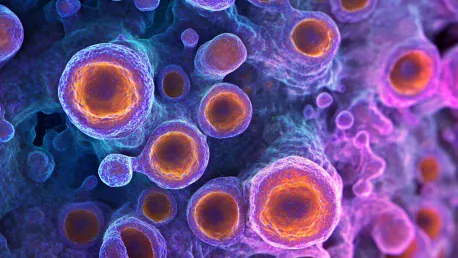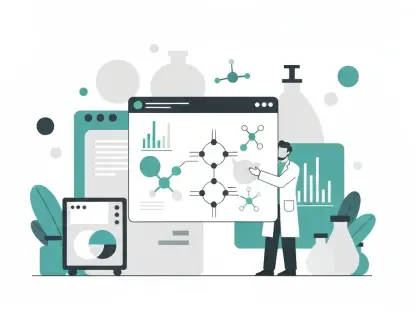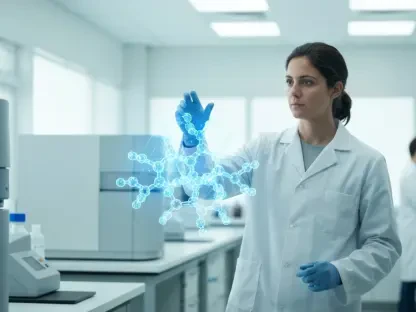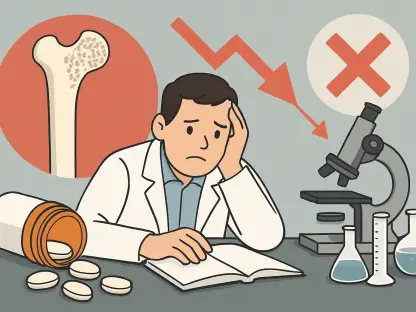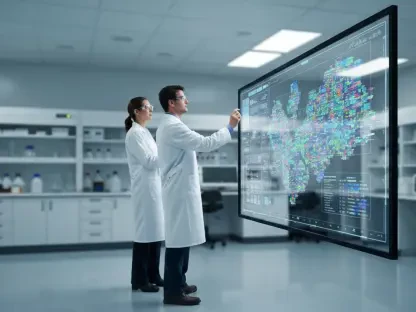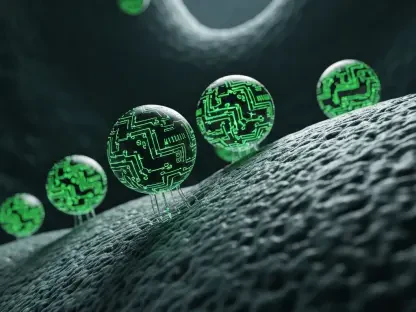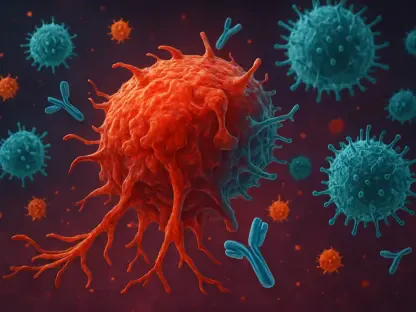Aneuploidy, the presence of an abnormal number of chromosomes within a cell, is widely recognized as a defining hallmark of cancer. This association has guided cancer diagnostics and research for years, embedding in the scientific community’s understanding of how cancers develop and progress. However, recent findings are now challenging this conventional wisdom. New research has discovered that even non-cancerous epithelial breast tissue in healthy women contains a small percentage of aneuploid cells. This revelation opens the door to a host of questions regarding the implications for breast cancer diagnostics and the understanding of cancer’s onset.
Technological Advances in Detecting Aneuploidy
Historically, researchers harbored suspicions that aneuploid cells might exist within healthy mammalian tissues, but early technological limitations stymied their efforts to confirm this belief. Techniques such as fluorescence in situ hybridization (FISH) were fraught with challenges, including probe misplacement and hybridization failures, often resulting in grossly inaccurate estimates of aneuploidy levels. The advent of advanced single-cell DNA sequencing has ushered in a new era, providing researchers with a more precise tool for uncovering these elusive abnormalities.
These technological advancements have significantly revolutionized the landscape, allowing researchers to detect chromosomal abnormalities with an unprecedented level of accuracy. Single-cell DNA sequencing has opened up a detailed, microscale view of the genetic landscape within tissues, enabling the identification of aneuploid cells in healthy breast tissue. This breakthrough was virtually impossible using the older, less reliable techniques. The new methods drill down to an individual cell level, revealing a complex and nuanced picture that was previously obscured, thus rewriting the narrative of aneuploidy’s role in health and disease.
Study by Nicholas Navin and His Team
In pursuit of filling the data void concerning aneuploidy in normal tissues, Nicholas Navin, a noted genomic researcher at the University of Texas MD Anderson Cancer Center, led a groundbreaking study. Utilizing single-cell DNA sequencing, Navin’s team analyzed 83,206 breast epithelial cells from 49 women aged 18 to 63, all of whom were confirmed free of cancer through rigorous histological analysis.
The study yielded thought-provoking results: every woman examined had aneuploid cells ranging from 0.2 to over 20 percent of the total cells analyzed, with a median of 3.19 percent. Intriguingly, the proportion of aneuploid cells was found to be age-dependent, increasing as the women aged. The study further revealed that about 82 percent of these aneuploid cells divided into clones bearing the same chromosomal abnormalities. This suggests that these cells might possess a selective advantage, allowing them to proliferate and become predominant within the tissue over time.
Key Findings and Their Implications
One of the most striking findings of Navin’s study was the consistent observation of specific chromosomal abnormalities. The researchers frequently noted extra copies of the long arm of chromosome 1 and losses of the long arms of chromosomes 10, 16, and 22. These particular aneuploidies are also commonly detected in invasive breast cancer, raising intriguing questions about their role in early cancer development. Additionally, the study documented aneuploidies likely unrelated to cancer, such as the loss of the X chromosome. It also highlighted the absence of certain aneuploid events typically seen in cancer.
This nuanced landscape beckons further investigation. While the study’s data suggest that certain chromosomal abnormalities cannot be reliable markers for cancer, they leave open the tantalizing question of whether a higher proportion of aneuploid cells might elevate the risk of cancer development. Navin and his team have acknowledged this conundrum and are planning longitudinal studies to gather data from women who later develop breast cancer. Their goal is to map out how the presence of aneuploid cells in healthy tissue might correlate with cancer risk over time.
Comparison with Other Studies
Navin’s study is not an isolated observation. Another recent study has corroborated these findings, reporting that approximately 3.25 percent of normal breast epithelial cells are aneuploid. These congruent results across different research efforts underscore the reliability of single-cell sequencing as a crucial tool for our understanding of aneuploidy’s broader role in cancer biology.
The alignment of findings among various studies solidifies the argument that aneuploid cells are indeed common in healthy breast tissue. This challenges the long-held belief that aneuploidy is exclusively a characteristic of cancer cells, suggesting instead that these chromosomal abnormalities could have a more intricate role in tissue biology than previously realized. Such revelations prompt a more sophisticated discourse around the genesis of cancer and the cellular aberrations that may precede it.
Implications for Breast Cancer Diagnostics
The presence of aneuploid cells in healthy tissue introduces significant complications for breast cancer diagnostics. The newfound understanding that these chromosomal abnormalities might already exist in normal tissues necessitates a reevaluation of their use as cancer markers. Many of these abnormalities, previously thought to emerge exclusively during the later stages of tumorigenesis, now appear to be present well before cancer develops. This realization underscores the need for more nuanced diagnostic tools.
In practical terms, this knowledge complicates the diagnostic process, as it becomes increasingly difficult to draw a definitive line between normal and malignant states based on chromosomal abnormalities alone. Relying solely on the presence of aneuploid cells for diagnostic purposes could lead to false positives or unnecessary medical interventions. Therefore, there is an urgent scientific imperative to develop sophisticated diagnostic methodologies that can accurately distinguish between benign aneuploid cells and those indicative of malignancy.
Broader Implications and Future Research
The discovery of aneuploid cells in seemingly healthy breast tissue complicates the narrative of cancer development, emphasizing the necessity for a comprehensive understanding of what additional genetic or environmental factors might drive these cells towards malignancy. The complexity highlighted by these findings underscores the multifaceted nature of cancer biology and suggests that chromosomal abnormalities alone are insufficient to fully explain the transition from health to disease.
Future research should venture beyond the mere identification of aneuploid cells and delve into understanding the subsequent genetic mutations or cellular events that precipitate cancer. By leveraging advanced sequencing technologies, researchers can gain a deeper understanding of cancer initiation and progression, charting unknown paths that could inform both preventative measures and therapeutic interventions.
While Navin’s study has considerably advanced our knowledge, it also calls attention to the vast areas yet unexplored. Future investigations will undoubtedly build on these findings, contributing to a progressively nuanced understanding of cancer’s multifactorial nature.
Conclusion
Aneuploidy, characterized by an abnormal number of chromosomes within a cell, has long been recognized as a hallmark of cancer. This association has significantly influenced cancer diagnostics and research, shaping the scientific community’s understanding of cancer development and progression. Nonetheless, recent findings are challenging this entrenched belief. Researchers have discovered that even non-cancerous epithelial breast tissue in healthy women contains a small percentage of aneuploid cells. This surprising discovery raises numerous questions regarding the implications for breast cancer diagnostics and our comprehension of cancer’s onset.
Given that aneuploidy is no longer exclusive to cancerous cells, scientists must explore further to understand its actual role in cancer biology. Does the presence of aneuploid cells in healthy tissue suggest a potential predisposition to cancer, or is it merely a benign anomaly? Answers to these questions could revolutionize how we approach cancer diagnosis and treatment. Moreover, it may force a re-evaluation of other assumptions about cellular abnormalities and their implications for health. As research continues, the medical community must stay attentive to these developments, as they may redefine our approach to cancer research and patient care.
